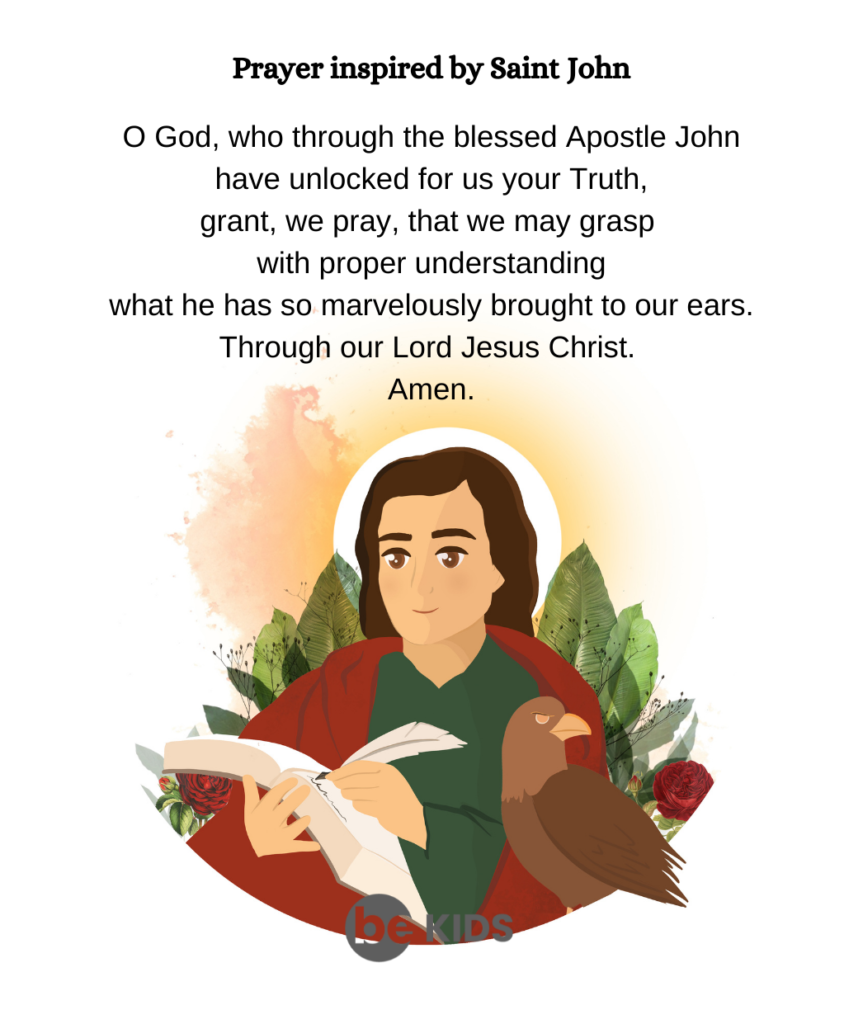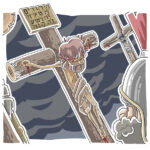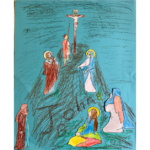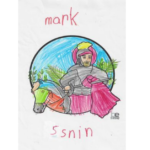
“For God so loved the world that He gave His One and Only Son that whoever believes in Him shall not perish but have eternal life.”
That is what we really celebrate at Christmas!
And that is what we are told in the fourth Gospel attributed to St. John the Apostle, the Evangelist, often referred to as the Disciple whom Jesus loved according to Church Tradition.
It is therefore so significant that the Church celebrates the Feastday of St. John just two days after Christmas!
John was the son of Salome and Zebedee, a fisherman, but also a man of means. Together with his sons and other men in their employment they fished on the shores of the Sea of Galilee. John and his elder brother James were followers of John the Baptist when Jesus called them. They immediately left everything to follow Him, standing close to Him throughout His public ministry.
Together with Peter and James, John was a witness of the raising of Jairus daughter, and present at the Transfiguration. With Peter he made the preparations for the Last Supper sitting close to Jesus during the meal and later accompanied Jesus at the Agony in the Garden. He was the only Apostle present at the foot of the Cross, accepting the guardianship of Our Lady. Together with Peter he ran to the empty tomb witnessing the first signs of the Resurrection.
Both he and James were calm and gentle persons, but sometimes they had a tendency to become “thunderous,” breaking out in anger when they lost their patience! One time Jesus referred to them as “Boanerges” ~ Sons of Thunder! In fact, John and James were rebuked by Jesus when they wanted to call down fire from heaven on the Samaritans, when they confronted a non-disciple who was casting out demons and when together with their mother asked Jesus to save the best seats for them in His Kingdom!
It is traditionally believed that after Our Lady was taken to heaven, John travelled to Asia, preaching the Good News, living mainly in Ephesus. Here, he was arrested and taken to Rome as Christians were being persecuted following the edict of Emperor Domitian. He was condemned to death by being thrown in boiling oil. Tradition holds that he came out of it unhurt and he was then banished to Patmos, a Greek island. On the death of Domitian he returned to Ephesus, where together with seven bishops, he took charge of the continuous evangelization of Asia Minor. It is believed that he died at Ephesus when he was well over ninety years old.
In art, St. John is depicted with the symbol of an eagle, a bird that flies to great heights, symbolizing “the height he rose to, in his gospel.”












